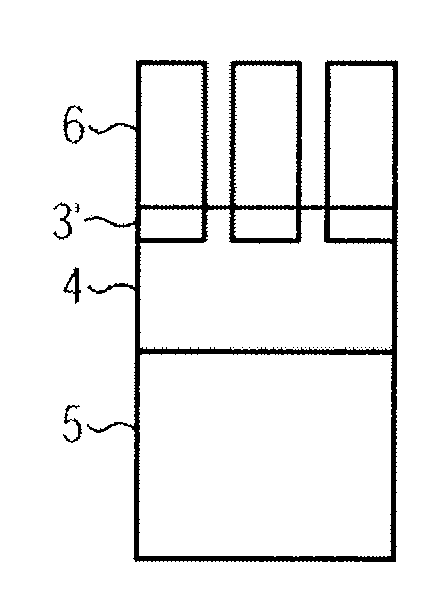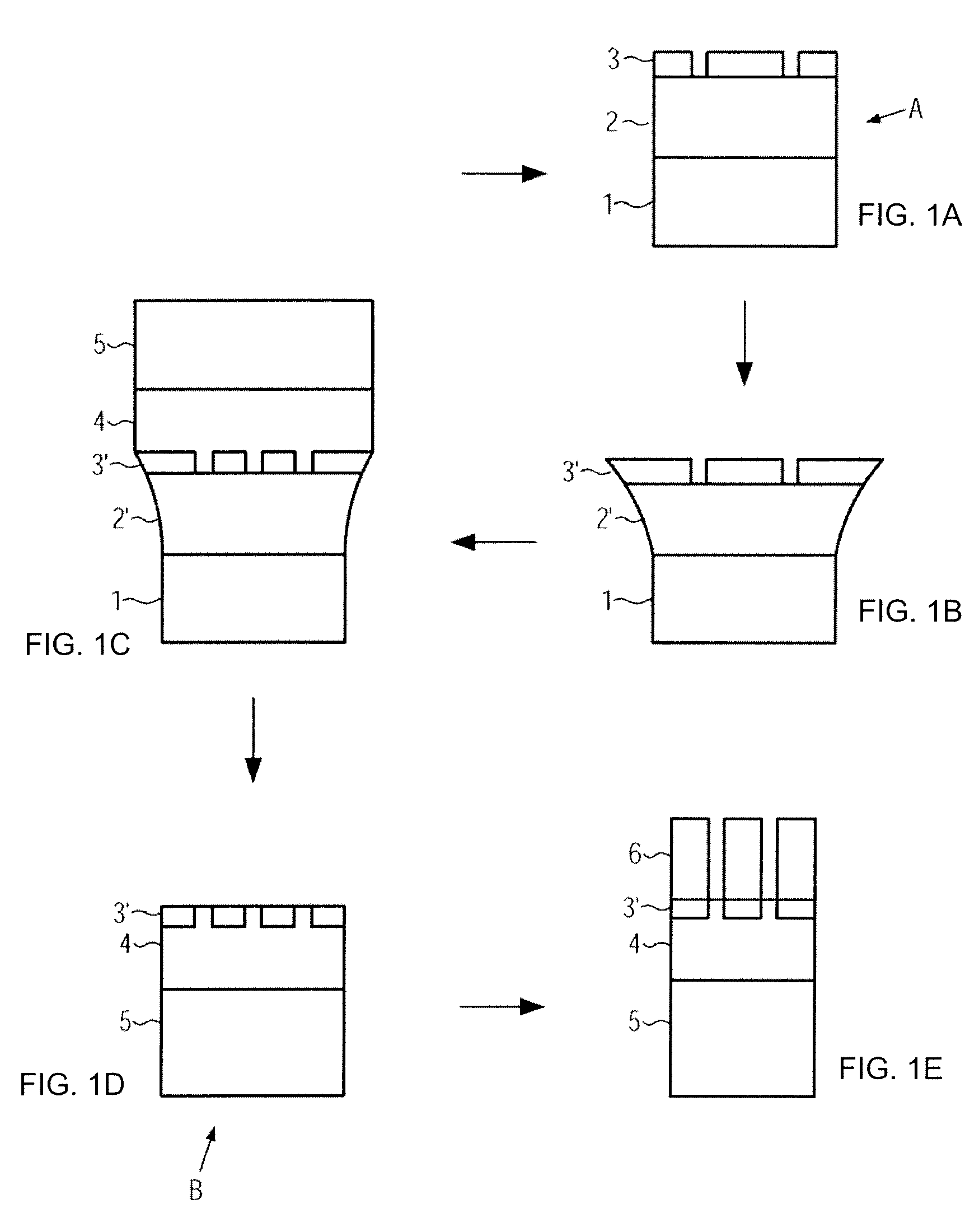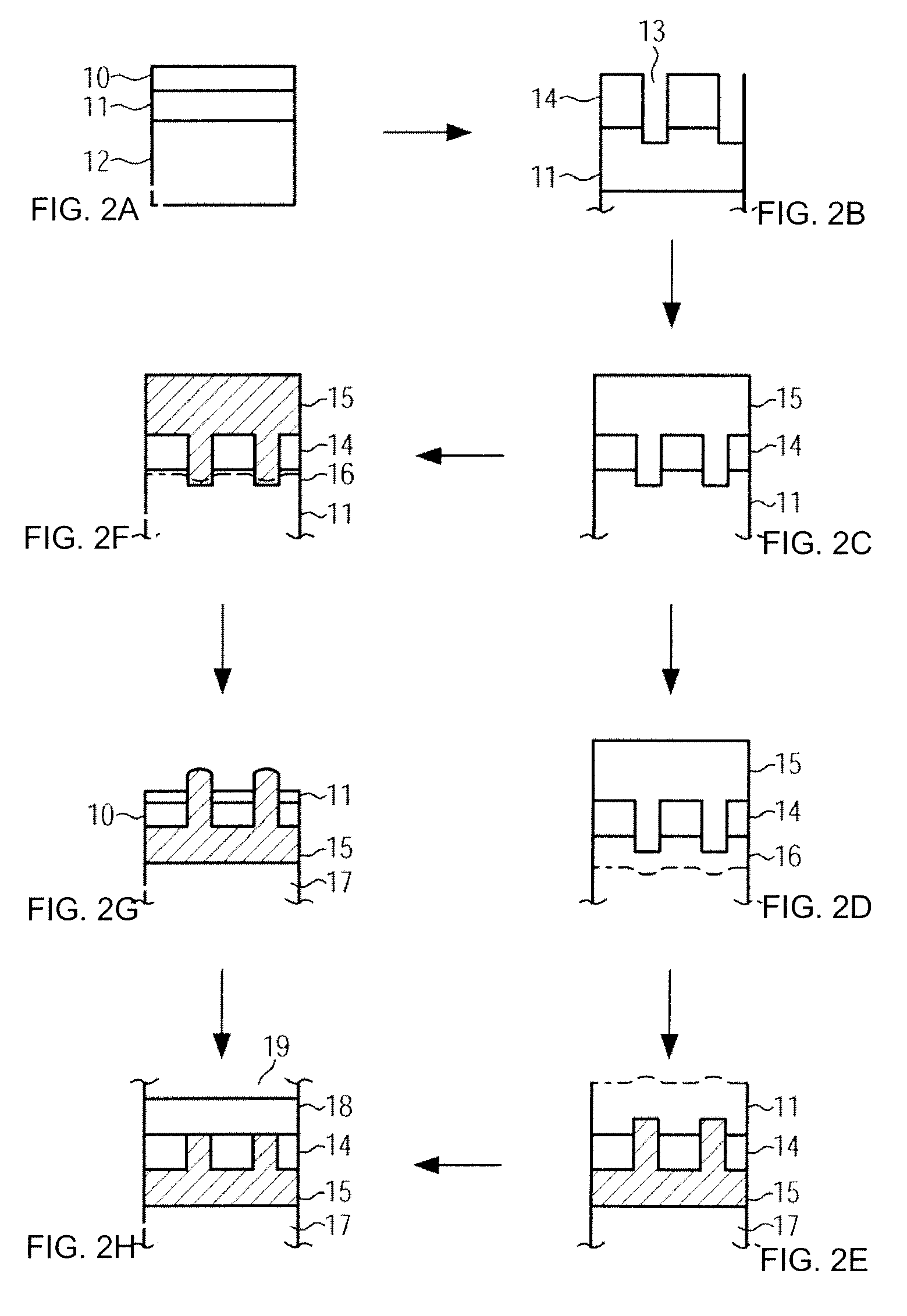Methods for relaxation and transfer of strained layers and structures fabricated thereby
- Summary
- Abstract
- Description
- Claims
- Application Information
AI Technical Summary
Benefits of technology
Problems solved by technology
Method used
Image
Examples
Embodiment Construction
[0015]The present methods provide for the formation of reliably relaxed and intact strained films, or islands of such films, on target substrates that have the quality required for the fabrication of semiconductor devices. These methods generally include forming islands from a strained material layer on an intermediate substrate; performing a first heat treatment so as to at least partially relax the strained material islands; and transferring the at least partially relaxed strained material islands to the target substrate.
[0016]When the strained material is polar, as for the c-plane Group III-nitride material, and when the methods, first, grow the strained material on a seed substance and then perform a two-step transfer process, the polarity of the face of the relaxed strained material opposing the growth face (i.e., the buried face during growth) on the seed substance can be maintained so that is suitable for subsequent epitaxial growth of layers. A “two-step transfer” process he...
PUM
 Login to View More
Login to View More Abstract
Description
Claims
Application Information
 Login to View More
Login to View More - R&D
- Intellectual Property
- Life Sciences
- Materials
- Tech Scout
- Unparalleled Data Quality
- Higher Quality Content
- 60% Fewer Hallucinations
Browse by: Latest US Patents, China's latest patents, Technical Efficacy Thesaurus, Application Domain, Technology Topic, Popular Technical Reports.
© 2025 PatSnap. All rights reserved.Legal|Privacy policy|Modern Slavery Act Transparency Statement|Sitemap|About US| Contact US: help@patsnap.com



